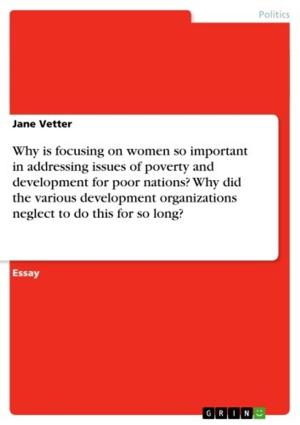Romantic Elements in Washington Irving's Rip Van Winkle
Fiction & Literature, Literary Theory & Criticism, British| Author: | Christina Gieseler | ISBN: | 9783640592838 |
| Publisher: | GRIN Publishing | Publication: | April 14, 2010 |
| Imprint: | GRIN Publishing | Language: | English |
| Author: | Christina Gieseler |
| ISBN: | 9783640592838 |
| Publisher: | GRIN Publishing |
| Publication: | April 14, 2010 |
| Imprint: | GRIN Publishing |
| Language: | English |
Seminar paper from the year 2007 in the subject English Language and Literature Studies - Literature, grade: 1,3, University of Wuppertal (Anglistik/Amerikanistik), language: English, abstract: Washington Irving was one of the 'first notable fiction writers of the American romantic movement' (Keenan 970). His sketch book with tales such as 'Rip Van Winkle' 'made Irving the first American author to attain an international reputation' (Fender 165). Whereas Irving's prior work, the History of New York (1809) is written in a neoclassical1 tone right in the sense the Age of Reason and Enlightenment, 'The Sketch Book [...], showed that Irving had gradually become a romanticist' (cf. Callow and Reilly 76). According to the 'Oxford Companion to American Literature', Romanticism is a 'term that is associated with imagination and boundlessness' (Hart 724). Furthermore, it was a movement that 'elevated the individual, the passions, and the inner life. Romanticism, a reaction against neoclassicism, stressed strong emotion, imagination, freedom from classical correctness in art forms, and rebellion against social conventions'2. The goal of this paper is to examine and explain the major romantic elements in Washington Irving's 'Rip Van Winkle'. Therefore, at first the developments and ways of thinking during the Romantic period will be described, and briefly contrasted with those of the Age of Reason and Enlightenment. Then some information will be given on Irving as a romantic writer and the background of the tale of 'Rip Van Winkle'. After that several romantic features will be highlighted within short analyses of parts of the tale. Due to the briefness of the paper, the discussed features are restricted to themes such as 'Truth', 'Individualism' and the depiction of Rip Van Winkle as a common man, as well as the function of nature within the story.
Seminar paper from the year 2007 in the subject English Language and Literature Studies - Literature, grade: 1,3, University of Wuppertal (Anglistik/Amerikanistik), language: English, abstract: Washington Irving was one of the 'first notable fiction writers of the American romantic movement' (Keenan 970). His sketch book with tales such as 'Rip Van Winkle' 'made Irving the first American author to attain an international reputation' (Fender 165). Whereas Irving's prior work, the History of New York (1809) is written in a neoclassical1 tone right in the sense the Age of Reason and Enlightenment, 'The Sketch Book [...], showed that Irving had gradually become a romanticist' (cf. Callow and Reilly 76). According to the 'Oxford Companion to American Literature', Romanticism is a 'term that is associated with imagination and boundlessness' (Hart 724). Furthermore, it was a movement that 'elevated the individual, the passions, and the inner life. Romanticism, a reaction against neoclassicism, stressed strong emotion, imagination, freedom from classical correctness in art forms, and rebellion against social conventions'2. The goal of this paper is to examine and explain the major romantic elements in Washington Irving's 'Rip Van Winkle'. Therefore, at first the developments and ways of thinking during the Romantic period will be described, and briefly contrasted with those of the Age of Reason and Enlightenment. Then some information will be given on Irving as a romantic writer and the background of the tale of 'Rip Van Winkle'. After that several romantic features will be highlighted within short analyses of parts of the tale. Due to the briefness of the paper, the discussed features are restricted to themes such as 'Truth', 'Individualism' and the depiction of Rip Van Winkle as a common man, as well as the function of nature within the story.















